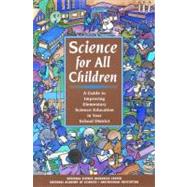
| Foreword | vii | (2) | |||
| Preface | ix | (2) | |||
| Acknowledgments | xi | ||||
| Introduction | 1 | (4) | |||
| Part 1 Building a Foundation for Change | 5 | (56) | |||
|
7 | (14) | |||
|
21 | (11) | |||
|
32 | (7) | |||
|
39 | (22) | |||
| Part 2 The Nuts and Bolts of Change | 61 | (72) | |||
|
63 | (13) | |||
|
76 | (13) | |||
|
89 | (11) | |||
|
100 | (22) | |||
|
122 | (11) | |||
| Inquiry-Centered Science in Practice | 133 | (58) | |||
| Introduction | 135 | (3) | |||
|
138 | (8) | |||
|
146 | (7) | |||
|
153 | (5) | |||
|
158 | (6) | |||
|
164 | (7) | |||
|
171 | (6) | |||
|
177 | (7) | |||
|
184 | (7) | |||
| Epilogue | 191 | (2) | |||
| Notes | 193 | (3) | |||
| Appendix A Professional Associations and U.S. Government Organizations | 196 | (18) | |||
| Appendix B Exemplary Elementary Science Curriculm Materials | 214 | (2) | |||
| Index | 216 | (6) | |||
| Credits | 222 | (2) | |||
| National Science Resources Center Advisory Board | 224 |
The New copy of this book will include any supplemental materials advertised. Please check the title of the book to determine if it should include any access cards, study guides, lab manuals, CDs, etc.
The Used, Rental and eBook copies of this book are not guaranteed to include any supplemental materials. Typically, only the book itself is included. This is true even if the title states it includes any access cards, study guides, lab manuals, CDs, etc.